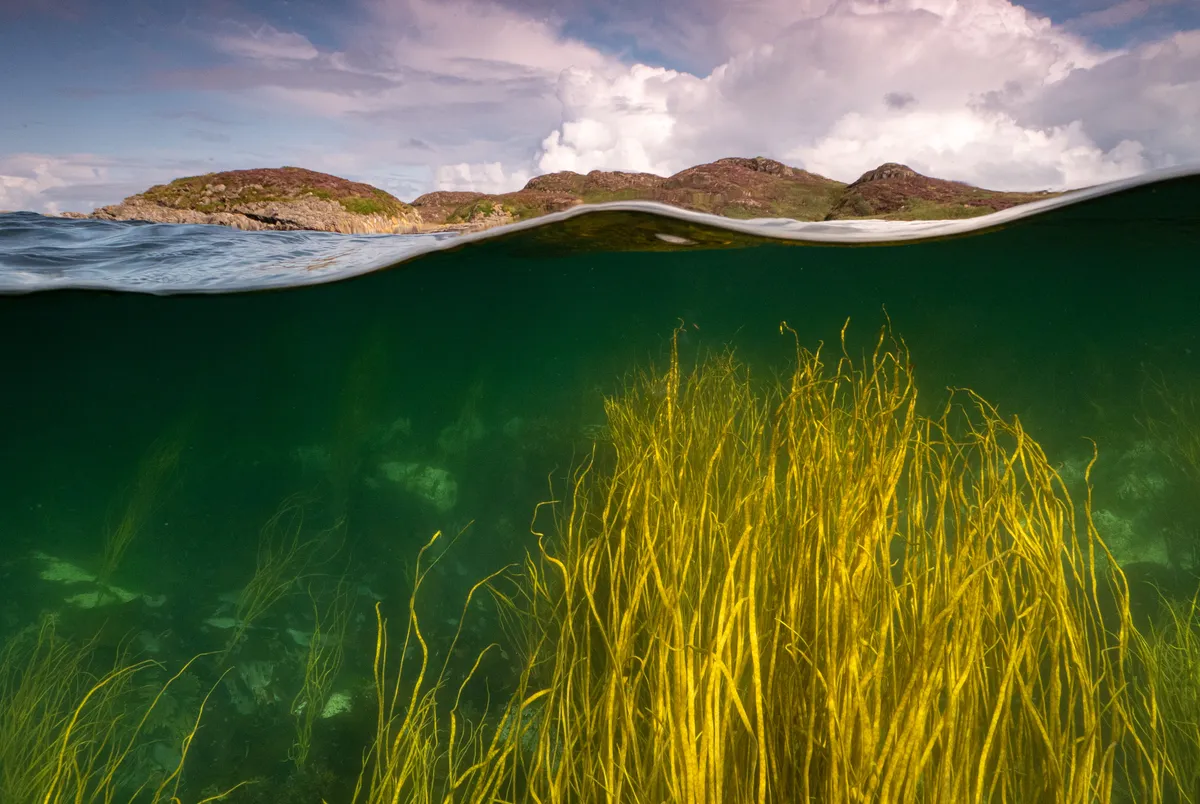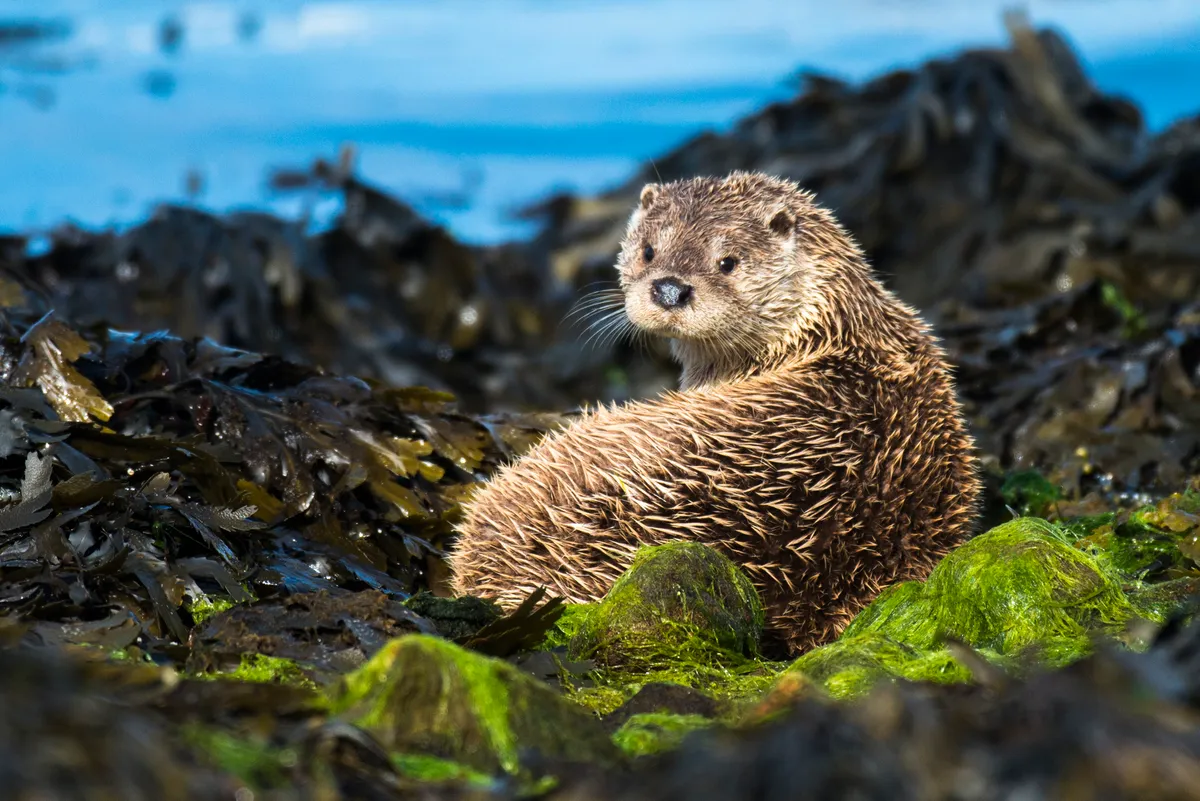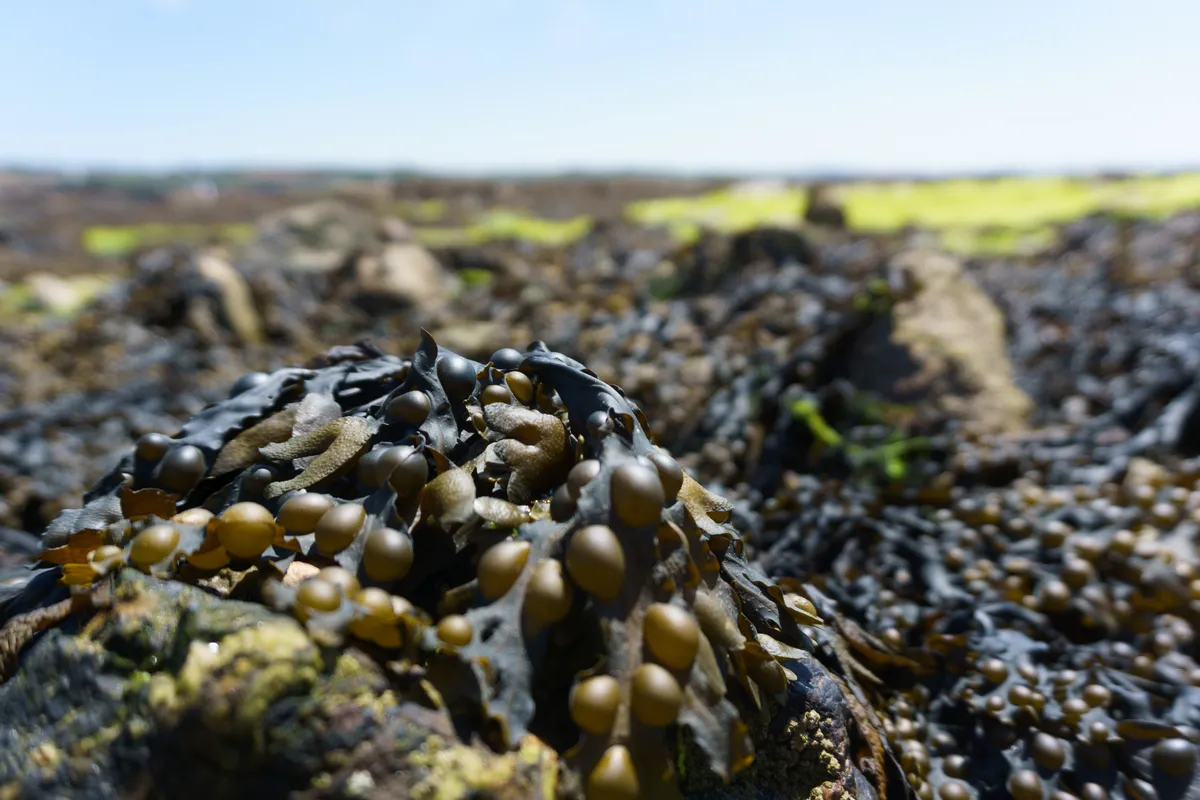The Big Seaweed Search, which runs from 23–31 July 2022, relies on citizen scientists to find and record the 14 most common types of seaweed found around the UK’s shores. To results will allow experts to assess the impact of environmental changes in the ocean, which in turn can help inform conservation decisions.
Seaweed is an essential component of the world’s oceans. It is crucial for marine life – from crabs and bivalves to bigger creatures such as cetaceans and seabirds – offering critical habitats, and providing them with a great source of nutrients and energy.
Kelp in particular has been hailed as a fantastic blue carbon store, soaking up carbon from the water and atmosphere and helping to mitigate the impact of global warming. However, research has found that kelp populations are declining worldwide, limiting the ocean’s ability to absorb carbon.
Find out how to take part in the 2022 Big Seaweed Search Week, plus key species to identify on your trip to the coast.

What is the Big Seaweed Search?
As part of the Big Seaweed Search Week, the Natural History Museum and Marine Conservation Society will be asking people across the UK to head to the coast and spot seaweed.
This vital information helps experts to map the distribution of specific species and collect long-term data that enables them to determine, as a result of seaweeds found, the impact of environmental changes in the ocean.
Seaweed is awesome and we're celebrating this ocean superhero with the launch of our #BigSeaweedSearch Week ????
Become a citizen scientist! ???????? Help us & @NHM_CitSci by exploring the #seashore and recording the #seaweeds you find there ???????? https://t.co/2WPHuKIb2a
— Marine Conservation Society (@mcsuk) July 26, 2021
How to take part in the Big Seaweed Search
The Big Seaweed Search Week runs from 23–31 July 2022.
"It’s easy for anyone to get involved in Big Seaweed Search Week – you don’t need to be a seaweed expert or live near the sea, just one visit to the coast will do," said Amy Pilsbury, Citizen Science Lead at the Marine Conservation Society.
To take part in the Search, register then download the guide and recording form from bigseaweedsearch.org, then head down to the seaside!
Choose five metres of coastline to survey, record what you find – referring to the seaweed guide – and be sure to take plenty of clear, close-up photographs of the seaweed you find. When you’ve finished, upload your photos and submit your form to bigseaweedsearch.org.

Big Seaweed Search Week: three species to spot
Although there are over 650 different species of seaweed found around the UK, you won’t be required to know all of them! Instead, The Marine Conservation Society and Natural History Museum will provide a helpful guide detailing 14 different types of seaweed to look out for.
Among them are three of the most common and best known seaweeds that can be found bobbing in the surf and blanketing rocks on the beaches:
Bladder wrack, Fucus vesiculosus

Also known as rockweed, sea oak, and rock wrack among other names, this seaweed has distinctive, firm, air-filled sacks, and if you’ve ever visited a beach anywhere in the UK, chances are that you have already seen this very common algae.
Spiral wrack, Fucus spiralis

Also known as twisted wrack, this pale olive-brown seaweed — identified by its distinctive spiral twist — grows just below the high water mark on rocky shores around the UK.
Sugar kelp, Laminaria saccharina

This brown algae can be found as far north as the north east Atlantic and as far south as Spain. Its tough, elongated strap-shaped frond has a crinkled, dimpled, or ruffled surface — it is sometimes also called ‘Devil’s apron’ owing to this distinctive appearance.
To take part, download your guide and recording form The Big Seaweed Search.
